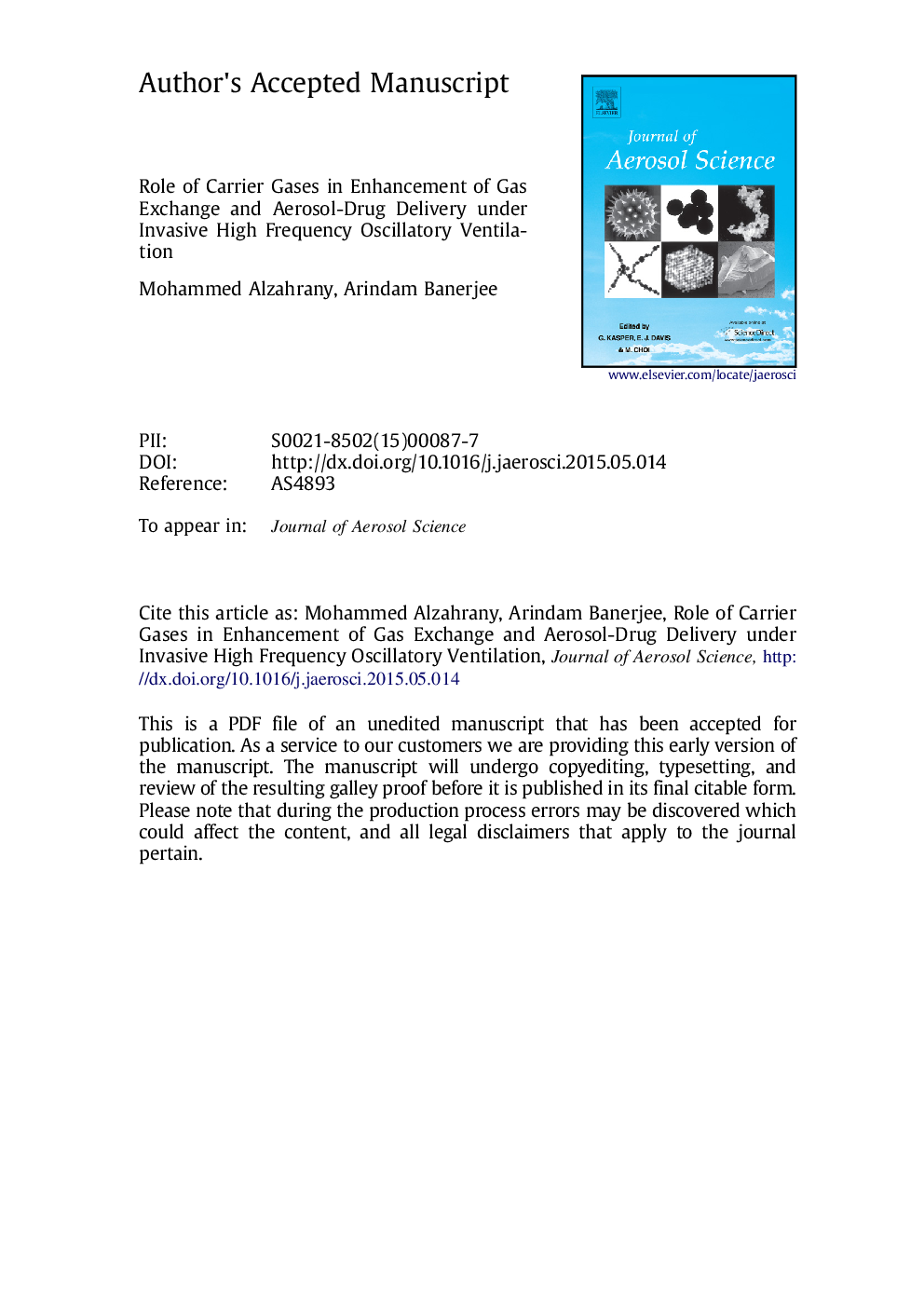| Article ID | Journal | Published Year | Pages | File Type |
|---|---|---|---|---|
| 6344431 | Journal of Aerosol Science | 2015 | 49 Pages |
Abstract
The primary objective of this paper is to understand the role of carrier gas properties in gas exchange and particle transport during high frequency oscillatory ventilation (HFOV). Recent studies have indicated that particle deposition efficiencies during HFOV are similar to normal breathing and conventional ventilation modes. However, a detailed understanding of the role of carrier gas mixtures is required to enhance HFOV therapy in clinical practice. The continuous phase was modeled using large eddy simulation. A Lagrangian particle tracking approach was used to model particle transport in a realistic human upper tracheobronchial tree model. Coupled airways resistance-compliance was used to apply physiological pressure boundary conditions. Four different carrier gases, He, He-O2 (Heliox), Xe-O2 and SF6-O2 were used and the results compared to air only simulations. A significant reduction of the flow turbulence and airway resistance occurred under HFOV conditions when using Heliox. A substantial amplification of the pendelluft flow and improvement in gas exchange was achieved by reducing the carrier gas density that also significantly altered aerosol-drug delivery; the deposition fraction in the upper tracheobronchial tree decreased indicating enhancement of the lung periphery delivery. Furthermore, the filtered aerosol-drug in the ventilator circuit could be significantly reduced by using Heliox, and further reduction could be achieved by reducing the operating frequency. In general, HFOV therapy could be improved under Heliox with greater content of He, thereby reducing the risk of lung hyperinflation.
Keywords
Related Topics
Physical Sciences and Engineering
Earth and Planetary Sciences
Atmospheric Science
Authors
Mohammed Alzahrany, Arindam Banerjee,
